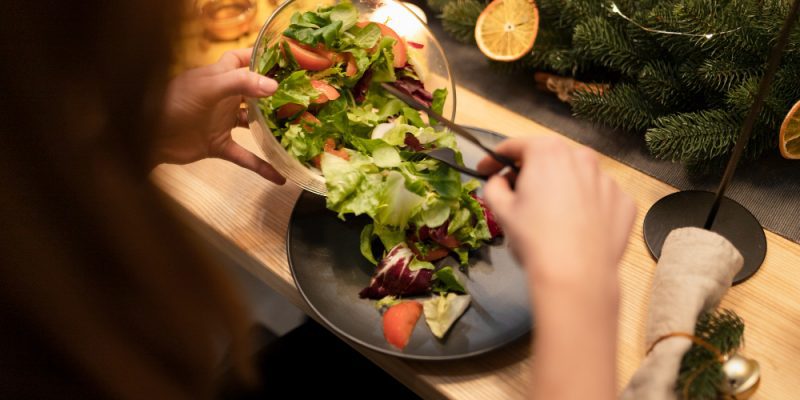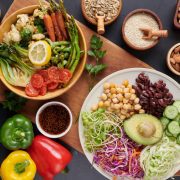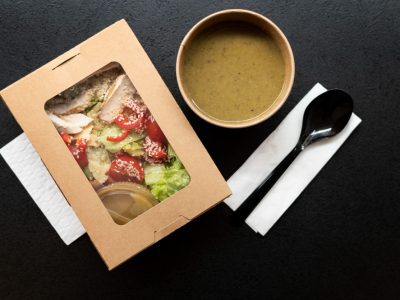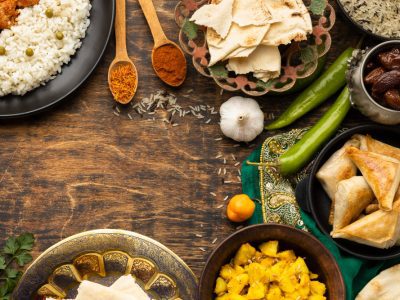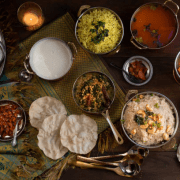Introduction to Seasonal Foods
Our ancestors’ diets have always been controlled by the natural cycle of the seasons, as they consumed the food that was easily accessible at different times of the year. Eating in accordance with the seasons allows our bodies to better respond to the natural cycles of harvesting and growth. There is less of a link to seasonal food in today’s globalised food system because nearly any produce may be found all year. Nevertheless, there is an increasing body of opinion calling for a shift back to seasonal eating, with proponents pointing out the many ways in which this practice improves human well-being, the planet, and regional economy. The flavour and nutritional content of food that is harvested at its optimal ripeness during the season are far higher than those of produce that is cultivated in controlled surroundings or transported long distances out of season. Imagine the earthy depth of winter-harvested root vegetables or the burst of sweetness of a locally grown mango in the summer. There is no comparison to these flavours. In addition, the vitamins and minerals found in seasonal produce are better preserved because it has not been sitting around for weeks.
Because humans eat more varied fruits and vegetables throughout the year in accordance with their seasonal availability, the idea of seasonal food also promotes a more varied diet overall. A diverse range of nutrients is crucial for good health, and this assortment provides just that. In response to the rising demand for healthier and more environmentally friendly options, even online platforms such as HOGR delivery, which links customers with Bengaluru-based food providers, are putting more emphasis on seasonal foods and products obtained from nearby farms. A more flavourful, nutritious, and eco-conscious diet can be achieved by learning about seasonal food and embracing local produce.
Why Seasonal Eating Is Important
Embracing seasonal eating and prioritizing local produce offers a multitude of advantages that extend beyond just the taste of our food. It’s a holistic approach that benefits our health, the environment, and our communities.
Seasonal Eating Benefits
There is a web of interrelated and extensive benefits to eating seasonally. First of all, it has already been said that food that is in season usually has higher flavour. Consumption of fruits and vegetables is enhanced when they are plucked when they are at their most ripe, since this is when their whole flavour profile is developed. Second, it is usually healthier to eat food that is in season. The content of vitamins, minerals, and antioxidants in produce is higher when it is allowed to ripen naturally during the season as opposed to when it is harvested early or artificially ripened. Lastly, eating in season can help keep costs down. During their peak growing season, buyers can typically get fruits and vegetables at lower rates due to the quantity of supply. Lastly, eating according to the seasons promotes a diet that is more diverse.
When we eat in accordance with the seasons, we eat a variety of fruits and vegetables at all times of the year, which helps keep our nutritional consumption in check. Lastly, adhering to a seasonal diet helps maintain the natural cycles of our bodies. Fruits and vegetables that are lighter and more watery are plentiful in the summer, so we can stay cool and revitalised, while root vegetables that are heartier and provide more energy and warmth are available in the winter. Apps like HOGR delivery even help people eat more seasonally by showcasing items from Bengaluru merchants that are in season only.
Local Produce Guide
The advantages of eating seasonally are magnified when you prioritise local produce. Because it has not travelled as far, produce from close by is usually fresher. The reduced need to treat it with waxes or preservatives to increase its shelf life is another consequence of its shorter travel time. Shopping locally for food has several benefits, including boosting the economy, protecting agriculture, and bringing people closer to the farmers who provide their food. Being more transparent and trusting is another benefit of knowing the origin of your food.
Buying locally grown food is a great way to show your support for environmentally friendly farming methods. These farms are more prone to utilise practices that safeguard soil and water quality, and they may use fewer herbicides and pesticides. Ways to embrace this approach in Bengaluru include looking for farmers’ markets, local grocery stores that prioritise local products, and community-supported agriculture (CSA) programmes. Look for vendors who use seasonal and locally sourced food even when ordering through HOGR delivery and similar platforms. When you shop with intention, you can support a more sustainable food system while also indulging in the most flavourful, locally grown food possible.
Seasonal Food Guide
One of the most important things you can do to start eating seasonally in Bengaluru is to learn when the various fruits and veggies are in season. A regional seasonal food guide is provided here:
- Summer (March to May): Mangoes, watermelons, muskmelons, cucumbers, tomatoes, okra, gourds (bottle gourd, ridge gourd, bitter gourd), green beans, corn.
- Monsoon (June to September): Jackfruit, jamun (Indian plum), lychee, guava, amla (Indian gooseberry), spinach, fenugreek leaves, colocasia leaves, ginger, turmeric.
- Post-Monsoon/Autumn (October to November): Papaya, custard apple, pomegranate, sweet potato, carrots, beetroot, cauliflower, cabbage, peas.
- Winter (December to February): Strawberries, grapes, oranges, sapota (chiku), bananas, various leafy greens (mustard greens, collard greens), radishes, carrots, beetroot, peas, beans.
This is just a rough outline, and the actual seasonal food availability might change significantly from year to year and even from one microclimate to another. To find out what is really in season and at its best, it is important to visit local markets and talk to farmers. As a simple and tasty way to dine seasonally, many Bengaluru eateries and home cooks who sell their food through HOGR delivery typically showcase the seasonal ingredients they are utilising in their dishes.
Eating Locally
Seasonal eating is inextricably tied to eating locally. Eating what is in season in your area becomes second nature when you focus on buying local products. Since long-distance transportation uses a lot of energy and produces greenhouse gas emissions, this lessens their effect on the environment. In addition to preserving rural landscapes and keeping agricultural diversity alive, eating locally promotes the livelihoods of local farmers. It helps you feel more connected to the food you eat by shedding light on its origins and the methods used to cultivate it.
You may meet the farmers, ask them questions, and form relationships just by going to a farmers market. This bond is further reinforced when patrons patronise neighbourhood eateries that place an emphasis on farm-to-table methods. Supporting local food systems and enjoying the freshest products is possible even when using delivery services like HOGR delivery in Bengaluru. Just make sure to choose vendors who prioritise seasonal and locally produced food. Eating seasonally and locally allows you to savour the greatest flavours of your area while also making a conscious effort to build a food system that can withstand challenges.
Farm to Table
A culinary philosophy known as “farm to table” prioritises the one-on-one relationship between farmers and their customers. Individuals and businesses that practise farm-to-table principles place a premium on purchasing goods from nearby farmers and frequently feature information about the products’ origins on their menus. This method lessens the ecological footprint of food transportation while also guaranteeing the use of the freshest ingredients. By adjusting their menus to showcase what local farms are currently harvesting, farm-to-table restaurants frequently highlight seasonal foods. Dishes that adhere to this principle of seasonality and freshness are frequently nutrient-and flavor-packed.
A growing number of Bengaluru eateries are teaming up with nearby farmers to provide their customers with food that follows the “farm-to-table” philosophy. Local and seasonal eating is becoming more popular, and consumers can help by supporting farmers’ markets, community-supported agriculture (CSA) programmes, and eateries that serve it. You may still discover home cooks that highlight the use of farm-to-table goods even when buying home-cooked meals through HOGR delivery. This provides a handy option to support this sustainable eating style. A direct link between farmers and their customers is emphasised by the farm-to-table movement, which stresses the significance of understanding the origins of one’s food.
Summary
One effective strategy to feed ourselves, our communities, and the earth is to embrace seasonal eating and put an emphasis on buying local products. When our eating habits are in sync with the changing seasons, we can take advantage of the freshest, healthiest produce. Eating locally grown food helps build stronger economies and promotes a more sustainable food system.
By familiarising ourselves with Bengaluru’s seasonal food guide, we can make educated food choices all year round. The farm-to-table movement and the ideals of eating locally both stress the significance of having a one-on-one relationship between farmers and their customers. Even in the convenience-driven realm of online meal delivery, services like HOGR delivery are starting to notice and meet the desire for cuisine that is prepared with seasonal ingredients and sourced locally. By intentionally choosing to consume food that is in season and grown nearby, we may enjoy the most flavourful foods, help our local economies thrive, and ensure a healthier and more sustainable future for everyone.
A food enthusiast and a blogger – someone who likes to eat and write about it. I’m passionate about exploring different cuisines and challenging my palette. I give into my food craving regularly and am often on the hunt to find my new favorite food place in town.
